It started with a photo from the September 2018 issue of Ultrarunning magazine. The photo was from the 2018 Hardrock 100. I saw the insanity and intensity in that photo and said, “I think I want that.”
There are people who do ultramarathons to check off a box. That’s not me. I do them to get closer to the edge. To sharpen my perspective. To wash away the film that accretes from daily living.
To get to the Hardrock 100 you have to qualify first. You have to run another race of comparable toughness before you can even enter the lottery for the Hardrock 100. So in Fall 2019, I started looking at the list of qualifying races. There are a number of famous races on the list. The Wasatch Front 100, Run Rabbit Run, Cascade Crest 100, UTMB, etc. But most of them are in August or September. In August of 2020 I’d be taking my son to college. So that time of year would not work for me. But there was one qualifier in June. The Bighorn 100. The registration opened in October. So on October 15th, 2019 I paid my fee and signed up for the 2020 Bighorn 100.
Then 2020 happened. Or didn’t happen.
My two year plan to get to Hardrock was now off track. I made sure 2020 didn’t go to waste. I designed a homemade ultramarathon touching three different plains states.
Planning for 2021
So, in late October 2020, in the midst of a climactic last 2 weeks of a presidential election I decided to set my sights on 2021.
I’m making plans for June 18, 2021. I’m expecting everyone keep things in check until then. Please.
— Mike Gorski (@namedpipe) October 27, 2020
I don’t have much to say about training for the Bighorn because I don’t really have training plans. I run. A lot. Just about every day. Sometimes pretty far.
Having completed 3 previous 100 milers, I’ve got a reasonable degree of confidence in my ability to run 100 miles. Most of the work for the Bighorn 100 would be mental. And altitude. I’m confident in my legs and body. But if you’ve read the course description and medical information you’ll realize when they say, “High altitudes above 7000 feet coupled with strenuous exertion may produce various degrees of altitude sickness. This can lead to severe lung and brain swelling which without treatment could even lead to death,” they are serious.
I’ve never run far in the mountains. Dealing with 20,500 feet of climbing and 20,750 feet of descent would be the biggest challenge. That and managing my head as things fall apart above 9,000 feet above sea level.
Wyoming
By March of 2021 the race directors expressed a high degree of confidence that the race would go forward. So I booked a place to stay in Big Horn, WY. We found amazing ranch that provided restorative space for my family and me before the race.
On the Tuesday before the race my son and I drove up to the turn around point at the Jaws trailhead. I forgot how much work it is to drive up and down mountains. Not to mention all the Forest Service gravel roads we had to take. It gave me some perspective about how tough the race was going to be.
Star Spangled Banner and Tears?
The race started on Friday morning at 9 a.m. The national anthem was played on the trombone by one of the runners. It reverberated off the Tongue River canyon walls. Oh no, I was already tearing up and the race hadn’t even started. My emotions were running high.
The temperature was running high too. It was not as hot as it was on Tuesday when it reached 103F in Dayton. But it was already in the 70s and climbing to 90. Nonetheless, the first part of the race is filled with adrenaline and speed. So I climbed up 3000 vertical feet to the first major aid station, Dry Fork Ridge, at mile 13. At about a 11:20 minute per mile pace. A little too fast to be safe. But I was feeling fine.
The next major aid station was Sally’s Footbridge at mile 30. I was feeling pretty good through this section. I came into the Cow Camp aid station where they were frying up bacon. I ate a couple of fatty pieces. They guy frying the bacon said he has 48 pounds of bacon. He was hoping it would last all the way through Saturday. I was hoping to find out.
The path to the Footbridge aid station was shaded by large pines and filled with the roaring sound of the Little Bighorn River flowing through the canyon. The river was crystal clear. It had boulders the size of dump trucks in it. The white noise of the rapids calmed my head.
I ran with an older guy for bit. I asked him my usual trail question, “Have you done this race before?”
He said, “Yes, I attempted it in 2019. I got pull off at mile 82.”
I thought to myself how hard that would be. By the time I usually reach the 80 mile mark I figure I got the race in the bag. It’d be hard for me to stop.
Trouble at Sally’s Footbridge Outbound
I arrived at the Footbridge aid station and was greeted by the medical staff. I sat down and they asked me how I was doing. I said “My legs are good, my head is ok, but my diaphragm really hurts.” I don’t know what I said or how I looked, but all of a sudden three of the medical personnel were around me. And they seemed to be whispering. One of them asked if soup sounded good. I said, “Yes, that sounds great.” He brought me a cup of ramen. I quickly ate it all. I asked for another cup. Ate that one too. By the time I was ready for thirds I could stand up and get it myself. I was joking with the staff now. Smiling. More myself. They all left me alone now to focus on other racers.
I overheard them talking to a guy who was really out of it. They said the trouble with continuing on here is that you’d have to make it 18 miles to the Jaws trailhead before you could drop again. There were aid stations between here and Jaws but you couldn’t drop at those because they had no way to transport you out. I found out later the guy they were talking to dropped out at the Footbridge.
Upward and Onward and Helping Out
I was back on course heading toward Jaws, the turn around point. On the climb out, I was running with a woman when we came upon another woman who was walking. At this point we were on a narrow single track with a 50 foot drop-off into the Little Bighorn River on the left side.
The walking woman was very slow and a little tipsy. We passed her and slowed to ask how she was doing.
She said, “I feel like I’m drunk.”
Uh oh, that’s a sure sign of altitude sickness. Right at that moment she looked about to fall over.
The woman I was running with and I rushed back to grab the walking woman’s elbows and steady her. There was no place for her to sit. We had to guide her to a log about 30 feet up the trail to find a seat. We sat down with her. I offered her some beef jerky. The other woman offered her some ginger candy. The tipsy woman said she hadn’t been able to keep any food down. She pulled out a bag of gummy worms covered in potato chips and started eating them. She was getting more coherent.
I told her, “Take your time. It took me 20 minutes at the Footbridge to get close to feeling normal.”
The other woman said, “You have to promise us that you’ll head back down to the Footbridge aid station if you don’t feel better.” She agreed. The running woman and I then headed on down the trail. I found out later that the tipsy woman did drop out at the Footbridge aid station.
Water Feature
In the next section I’d have to cross what I’ll call the “water feature”. There’s a stream that flows off Leaky Mountain into the Little Bighorn River. That stream used to have small footbridge over it. But the footbridge is so rotted that they’ve abandoned it. So now there’s just a rope strung across the stream. And you wade across while holding the rope. And it’s about knee deep in the middle.
And I hate this.
I wanted no part in soaking my shoes and socks at this point in the race – mile 36ish. I decided to take my socks and shoes off to cross. Easier said than done.
So I take my shoes off. But my feet, which have been tightly held together by socks and shoes for 10 hours, freak out. My big toe started pointing perpendicular to the length of my foot with a massive cramp. I can barely walk. I braved the very cold water while holding the rope with one hand and my shoes in the other. The last few steps were slippery on the rocks. Then I was in the mud on the other side trying to figure out how to get my shoes and socks back on without a layer of mud. I found a spot next to the stream where I could sit on a rock. I plopped down and slowly rinsed one foot. Put on the sock. Then slipped the shoe on. I did the same for the other. It was painful and time consuming. But worth it for the benefit of dry feet. Back to the trail.
Out-and-back races are nice in that once you get to the turnaround there’s a natural motivation to get back to where you started from. But out-and-back races are bad in that any trail-related hardship you encounter on the way out would need to be broached again. The “water feature” would be back.
I resisted putting on my headlamp as long as possible. Running with a headlamp sucks. I kept seeing other runners with their headlamps on. I said to them, “I’m in headlamp denial.” They could appreciate that. I encountered a section of mud that I couldn’t navigate in the fading twilight. Time for the headlamp.
I ate more ramen at the Elk Camp aid station. The volunteers there had rode horseback in on Thursday. They were going to be camping there all weekend long. My hands were getting cold but I didn’t have any warm gear – pullovers, longsleeves, hat – until Jaws. Luckily I had my trusty handwarmers I’d gotten from my boss for Christmas. I used those and a thin pair of wool gloves to keep my upper body warm.
A Joyful Family at the Turnaround
I gradually ascended to the turn around point at Jaws. I kept checking my watch to get an altitude reading. I was excited to see the peak altitude. I eventually saw 9,100 feet on my watch. It was probably about 11:30 p.m. at this point so I couldn’t see a thing. But I did hear something. Just up the mountain from us I heard a pack of wolves barking and howling. Once the pack near me finished talking I heard another wolf howling far off in the distance.
I was running about 2 hours behind schedule in to the Jaws turnaround. I started doing the math and was worried that I might miss some cutoff times on Saturday.
As I approached Jaws I was peering into the dark at all the people sitting along the road. I was trying to see if any of them were my family. They’d decided to meet me at Jaws since that aid station was probably the most accessible by car. I was just about at the aid station when I heard a group of people cheering. I said, “Thanks!” And they said, “Mike?” It was my family. They found me! It was so great to see my family!
Say what you will about vacationing with teenagers but if you want an energetic party crew to greet you after midnight, then teenagers are the best!
Pessimistic Possibilities
I checked in to the runner tent. No crew were allowed in the runner tent. I decided to get some snacks and head out to the campfire to be with my family. We sat down by the fire and I started to get some warmer clothes on. I told my family I needed to say something.
I said, “I’m going to keep going. But I’ve got honest concerns that I might miss some cutoff times tomorrow. So I’m going to keep going until they tell me I can’t continue. And I’ll be ok with that. The race will have beat me.”
I said this to them because in 2016 I DNFed at mile 50 in the Superior 100 Mile trail race. That decision was a mistake. Dropping at mile 50 caused so much turmoil in my life. I’ve regretted it ever since. My family had to deal that aftermath. Tears. Anger. Desperate attempts for redemption. It’s still hard for me to even write about the decision to drop at mile 50 in the 2016 Superior Race.
Meanwhile, my guardian angel was overhearing us at the campfire. He was a youngish guy, I think, (mind you, it’s about 12:30 a.m. in the dark forest) who said to me, “You are well on track to finish. Keep the negative thoughts inside your head. No need to voice them. Only voice positive thoughts.”
It was good advice. He was right. I still had plenty of time.
But I knew I’d slow down the second day and my math was showing me possibly coming in after 3 p.m. to the Dry Fork Ridge aid station. 3 p.m. is the cutoff time.
So with his advice in mind, I put my warm pullover on and headed out. I was determined to keep going. One footstep at a time. If the race officials pull me off the course I’m ok with that. But I’m not giving up on my own.
Back Down The Mountain
Coming out of Jaws it was warmer than expected. I went through three clothing changes. First, I removed my pullover and hat and just went with short sleeves and mittens. Then as I got deeper into the canyon it got cooler. So I put the pullover back on but no hat. Finally my hands turned out fine. So I took my mittens off and carried them. No worry, the sun would bring dawn light by 4 a.m. so it wouldn’t be cold for long.
Water Feature, Round II
But I did have to cross that damn “water feature” again! This time I was determined not to take my shoes off.
When I got to the crossing I looked at it I saw large rocks along the bank. I decided that if I wasn’t going to take my shoes off I was at least not going to go knee deep into the water. So I grabbed a rock about the size of a skateboard and threw it into the middle of the stream. I grabbed another and did the same. One more for good measure. Now I had semi-submerged stepping stones across the stream. I grabbed the rope and proceeded. They stones worked only ok. I didn’t have to completely submerge my feet. But my shoes still managed to get fairly wet. “Oh well”, I thought, “I have plenty of socks and can change them when I get to Sally’s Footbridge.”
Sun Up at Sally’s Footbridge
The rising sun cast a glowing outline to the mountains. It was great to see the morning twilight illuminating edges again.
I arrived at Sally’s Footbridge around 7 a.m. for breakfast of more ramen soup and my drop bag. I wouldn’t need my pullover, mittens, or hat anymore. Put them in my drop bag. The next 16 miles would be mostly uphill as I climbed out of the Little Bighorn River valley. Having less to carry would make the climb easier.
The first section was pretty easy since the next aid station was only 3.5 miles away. Small segments are good motivation late in a race. But after that it would be a 7 mile leg and a 6 mile leg.
Along the 7 mile leg I started to feel a hotspot in my shoe. I had forgotten to change socks at the Footbridge. I found a shady spot in the pines and sat down on a log. I took my shoes off and swapped socks for a fresh, dry pair.
At this point I was trading places with a guy named Andrew from New Jersey. He asked if I was doing ok. I said I needed some dry socks. He kept moving past me. I’m sure I would catch up to him again.
Bacon-Fried Potatoes
I made it through the 7-mile leg to the Cow Camp aid station. You catch a glimpse of that aid station about a mile before you get to it. It was about noon. They were still frying bacon.
I asked them, “How much bacon do you have left?”
The man said, “About 10 pounds.” Well done! 38 pounds of bacon in about 24 hours!
Now they were cooking something new. They were slicing skin-on, boiled russet potatoes about 1/4 inch thick and frying them in bacon grease. O.M.G. I coulda just stayed at Cow Camp and ate those potatoes all day. Crispy, salty, a little soft in the middle – amazing!
Inside the tent at Cow Camp there were three 100-milers who were looking to drop. The heat was strong at this point and it took everything out of them. I’d just stay for the fried potatoes.
I was a little worried about making it to Dry Fork Ridge by the 3 p.m. cutoff. But I was willing to put one foot in front of the other and head out. So I ventured out into what was the most taxing and mentally challenging section I’d ever encountered. Like, I didn’t even recall a single bit of this section from Friday.
The Labyrinth of Hell
This dusty set red ATV trails wound their way through an exposed valley. Yet you were slowly climbing 900 vertical feet toward Dry Fork Ridge. The thing about ATV trails is that they don’t need to be graded for people since ATVs can climb steep grades easily. So the hills were like football-field length staircases. Because most of this section was in a valley you could see far ahead where you were heading. The sun was directly overhead. The entireity of it was deflating. Each mile was taking more than 21 minutes. Pure hell.
I seriously contemplated self-sabotage in this section. If I take really long I’d be sure to come in to Dry Fork Ridge after 3 p.m. Then I’d be done! They’d pull me off the course and I’d be saved! No more hell!
I kept going. One foot at a time.
All the while I was navigating this labyrinth I was with a back-of-the-pack group. We were “chasing cutoffs”. “Chasing cutoffs” is a technique you use in ultramarathons where you use the cutoff times as a deadline to keep you moving to the next aid station.
Meanwhile an ATV-paramedic-mobile was heading down toward Cow Camp to pick up the people who decided to drop. It kicked up a mean red dust cloud. It passed us with the runners in it on the way back up to Dry Fork Ridge.
“It’s better to take this mode of transport,” I said pointing to my feet, “than to be carted off in that thing.” It was dark humor for a tough section of trail.
Coming Out of Hell
I arrived at Dry Fork Ridge at 2 p.m. – ahead of the cutoff. I was immediately corned by a medical staffer before I could even sit down. She looked me directly in the eyes and asked, “Are you consuming fluids? Are you peeing ok?”
I said, “I’m doing pretty good on water. And my pee is crystal clear.” By this point in a most past races I’m so good at consuming water that I have to pee every 15 minutes. Kinda annoying.
I sat down and asked for a glass of Coke with ice. I also gave them my hat to fill with ice. I put it on my head.
I saw a number of runners eating McDonald’s cheeseburgers in the tent. The cheeseburger looked good. I asked a volunteer for one. I took the bun off (I didn’t need any bulk at this point in the race) and ate it. So I had a McDonald’s cheeseburger and a Coke at the last major aid station.
I filled up on water and headed out. I was reenergized. 18 miles left.
Optimistic Realizations
I started to do the math in my head. I was feeling confident that I could hit the last cutoff point, the start of Tongue Canyon Road, by 6 p.m. I was starting to feel elation. My odds of completing were pretty high now. I knew that 66% of finishers finish after 5 p.m. These realizations helped me pick up the pace.
I paired up with a 52-miler for a bit as we started descending the remaining 3,000 vertical feet. It was nice to have someone for company. We talked about other mountain races. She said she’d run with Pam Reed for few miles early on. Pam is an ultra superstar with multiple Badwater 135 wins and some world records under her belt.
The woman I was running with talked about her short time with Pam. “Pam talked about still being in pain from a 200-miler a couple of weeks back. Then Pam said to me, ‘Well, I gotta go,’ and then took off.” Pam does like 50 ultras a year.
I said, “Wow. She’s crazy!”
We talked about the ultramarathon cycle where you complete an ultra and say, “Yeah, I don’t need that again.” Then about a week later you’re looking at the race calendar trying to figure out what you can fit into your schedule. We’re a crazy bunch. Always looking for the edge.
Downhill Pounding
The 3,000 foot descent was tough. My quads were in great shape, no muscle pain from DOMS. But I had developed small blisters on the balls of my feet (fucking “water feature”!) Those blisters hurt like hell on the way down.
We got into the Tongue River canyon and I heard the sound of the river rolling along. What motivation! I passed a couple of 32-miler racers. They did not look like runners in the normal sense. They were tall and large. I’m always impressed with people who tackle hard things like that. It’s not natural for where they are in their life but they still sign up and pull it off.
I came to the very last aid station at the start of Tongue River Road. I said to the volunteer, “5 miles left? I don’t need anything here. I’m gonna do it!”
Family Help to the Finish
About mile down the gravel road my 13-year-old daughter met me. She was there to run the last miles with me. It was so exciting to see her and have someone with fresh legs and a fresh brain with me. I told her my goal was to finish before 7:10 p.m. (the race started 10 minutes late). That way I’d have a sub-34 hour race time. I thought it would be doable since it was about 6:15 when I met up with her.
We jogged along at about 14-minute per mile pace for a bit. Then we hit the compressed gravel portion of the road. The rocks of the gravel were locked in place rather than a more traditional loose gravel road. With every step I would land on the ball of my foot and experience severe pain where the blister had developed. We had to walk.
My daughter did great motivating me. I kept wanting to walk. But we’d reach a small downhill section and she’d say, “Let’s run this.” So I’d join her for about a minute. It’s good to keep the pace if I was to hit my goal time.
She joked that as she prodded me to keep running I would probably reach a breaking point and flip out at her.
I said, “At this point the only thing I’d do is just start crying.”
The last 5 miles felt like forever. Torment. I knew this section well enough from doing reconnaissance. Once we switched to a paved road we’d be close. I kept waiting for that to happen. But the compressed gravel kept winding every which way.
I asked my daughter to keep an eye on the time. Her job would be to try to see how close were were to 7:10.
As we hit the pavement, it was 7:01 p.m. I was able to pick up the pace now that the ground was smooth. We got to the point where we could see Highway 14 that we’d have to cross. At that point we’d be real close to Scott Park where the finish line was. But I didn’t know where in the park the finish was.
We picked up the pace.
As we got to Highway 14 race officials closed the road for us and we crossed together.
7:07.
We rounded the city street corner toward the park. Picking up pace. Doing about 10 minute miles. We entered the park. I saw that the finish was at the back of the park along the Tongue River. I picked up pace even faster.
My daughter said it was now 7:08.
We passed a group of runners heading toward the finish. We were sprinting now at about 9-minute miles along the homestretch.
We pushed hard to the finish and I looked at my watch – 7:09!!!
We did it! 100 miles!
I sat by the river and started crying. I really didn’t think it was possible. There were so many times that I thought it wouldn’t happen – that I wouldn’t finish.
But I finished.
Even as I write this I can’t fathom it happened. I check the results page every day to verify.
Trying to Soften the Edges
In the week afterward I ended up breaking down crying two more times. The first was when my 17-year-old daughter played “Reborn” by Kids See Ghosts on the way to Sioux Falls. The second time was when I was back at home trying to adjust to daily life and not able to have normal conversations.
I said to my wife: “You run far hoping to get closer to your true self. But in the end you just distance yourself from everything and everyone. Stupid. Stupid.”
This particular ultra shifted something foundational for me. I still can’t pinpoint it. It sharpened everything so much for me that I started to lose the ability to relate to others.
I told my wife’s parents that I ended up with a pretty bad blister. My father-in-law said, “Have you tried double socks?”
I said, “No.”
But I thought about how off-the-mark his comment was. It wasn’t intentionally off-the-mark. He was giving honest advice because he cared. It was only off-the-mark in the context of the extremes of mountain ultramarathoning. Comments from non-ultramarathoners feel so disconnected from the reality I experienced. Like we are from different civilizations.
Every conversation over the past week has felt like this. People either blankly look at you, trying to understand what you just said when you tell them you ran 100 miles for 34 hours. Or they suggest things nowhere near germane to what I’ve experienced.
I don’t mean to come off as impolite. I truly care about all the people who are interested in my running endeavors. But I don’t know how to talk to them. It’s almost like I feel telescoped from people.
As the week went on I began to understand Pam Reed more. Adjusting to the dullness of daily life is grueling. To most folks running 100 miles is grueling. You think to yourself, “I want to get back to that feeling. The risk of failure. The physical pain. The elation of completion.” And you sign up for another. And another.
How do I soften these edges chiseled by the 100 miles? Do I want to?
I see softening around me but it’s often mediocrity and complacency. A softening of the belly. The cheeks. I not interested in that.
But intricately chiseled faces are uninviting. My speaking cadence is staccato like the footsteps down the mountain – hard and relentless. It can send people away.
The valley of the ranch where we stayed helped soften me. I’m humbled by the mountains surrounding me. Perspective comes to fill in the empty space chiseled away.
Writing about it helps too.
Tom Hennen’s poem What the Plants Say says this, specifically about weeds:
“Help me to be in the world for no purpose at all except for the joy of sunlight and rain. Keep me close to the edge, where everything wild begins.”
I think about this poem all the time. I want to be close to the edge. But there’s no one there. It’s lonely. My edges get sharper because the world shapes me using crude tools like wind, water, dirt, rocks and the sun.
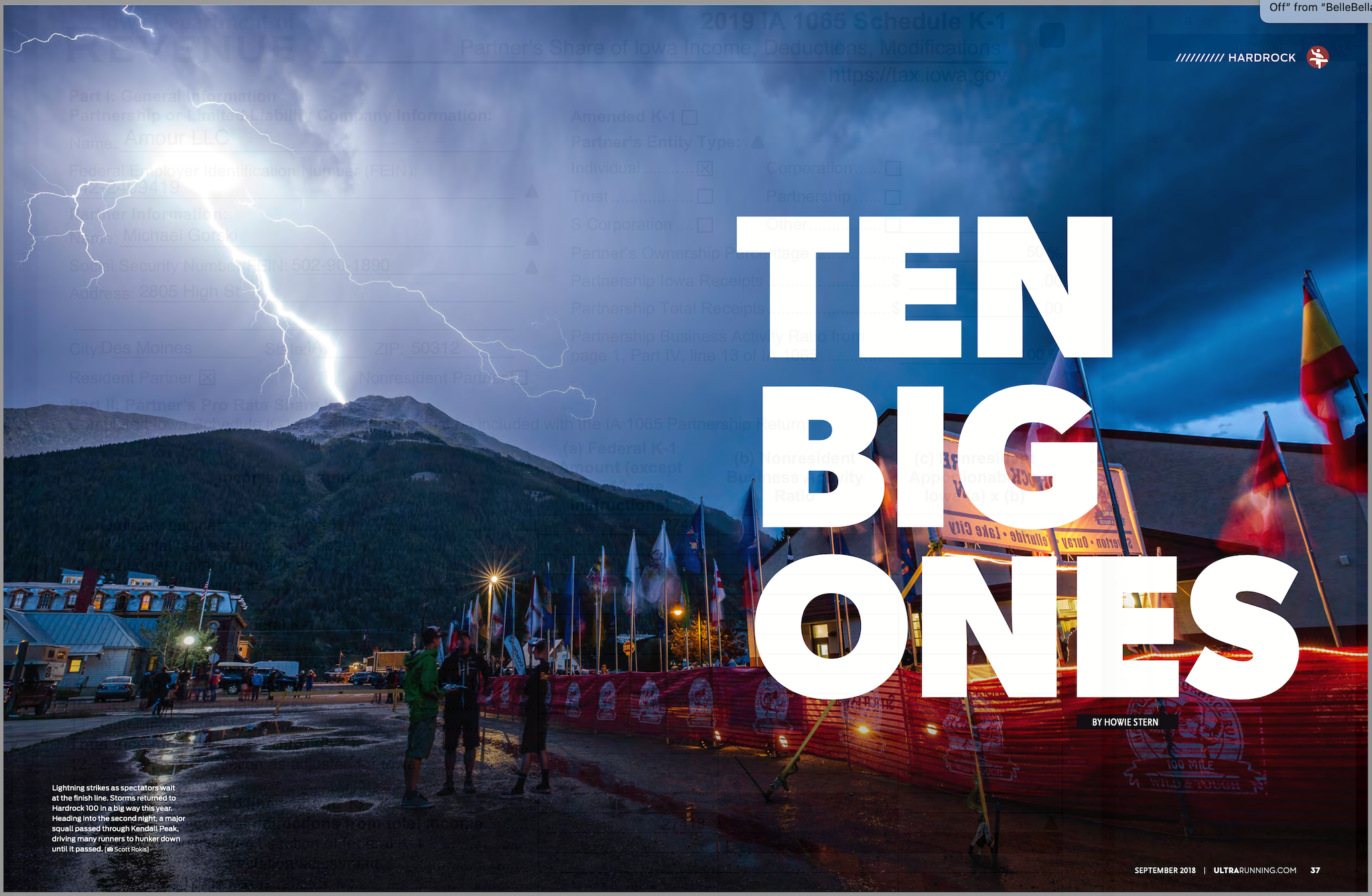
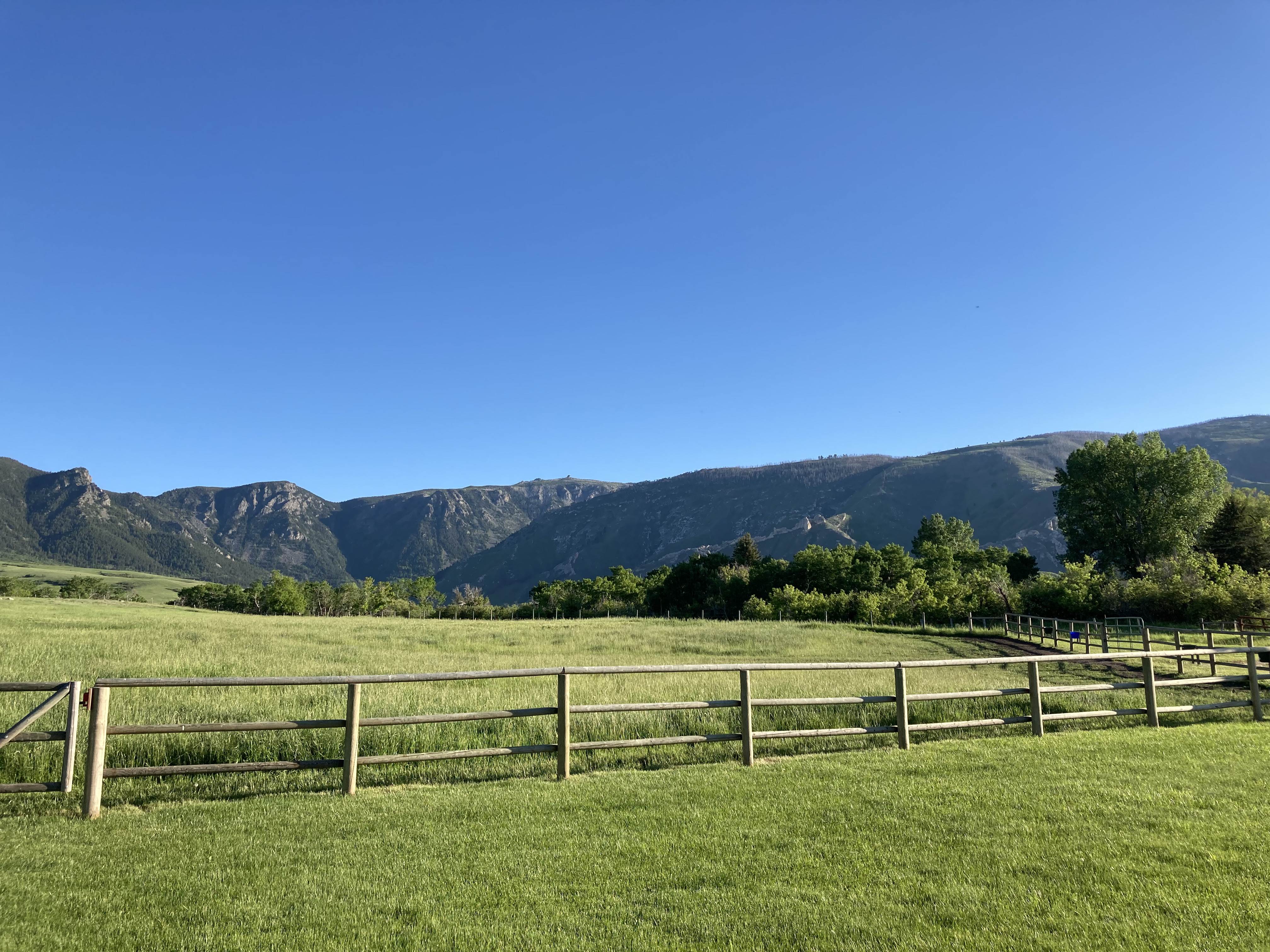
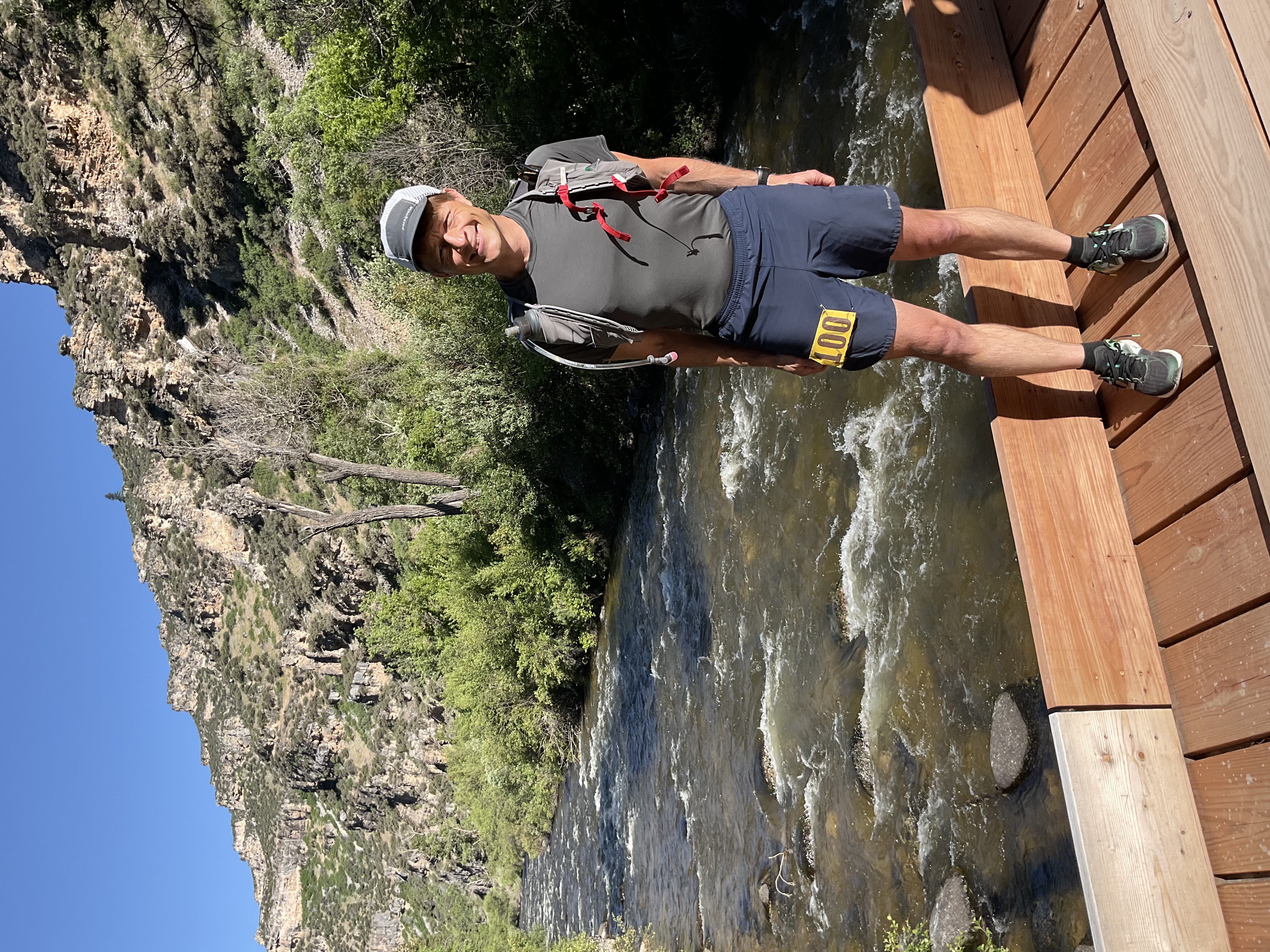
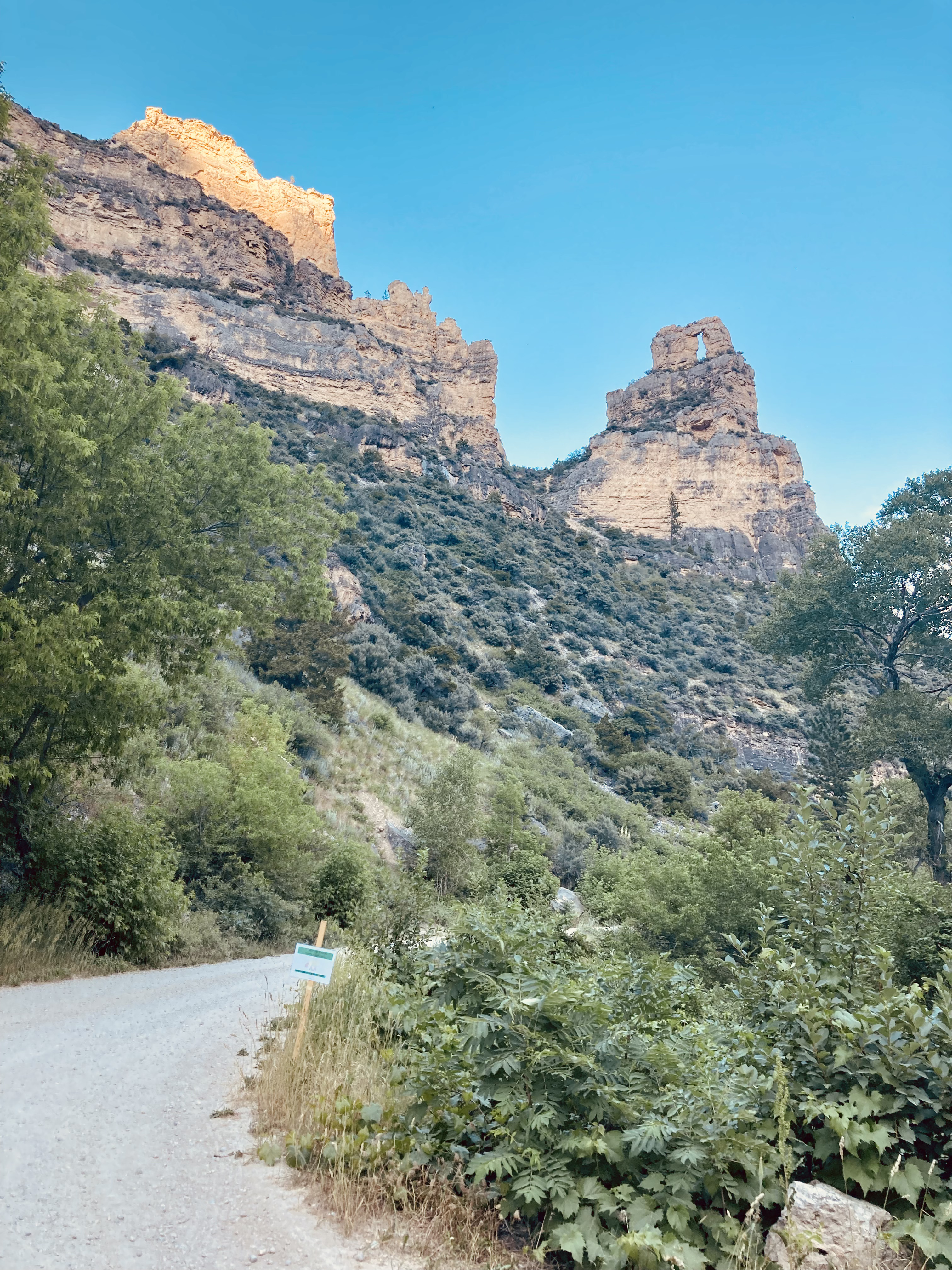
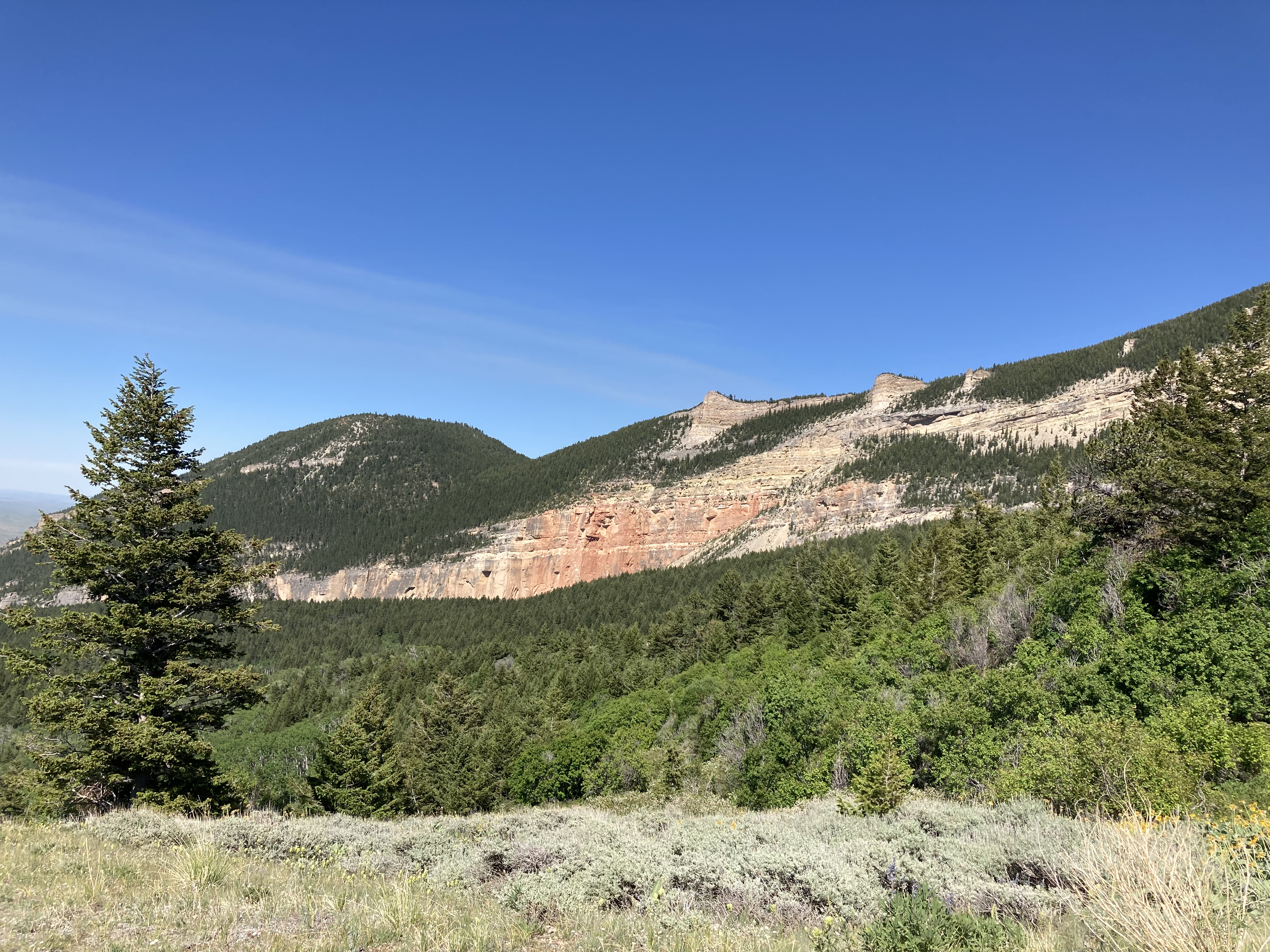
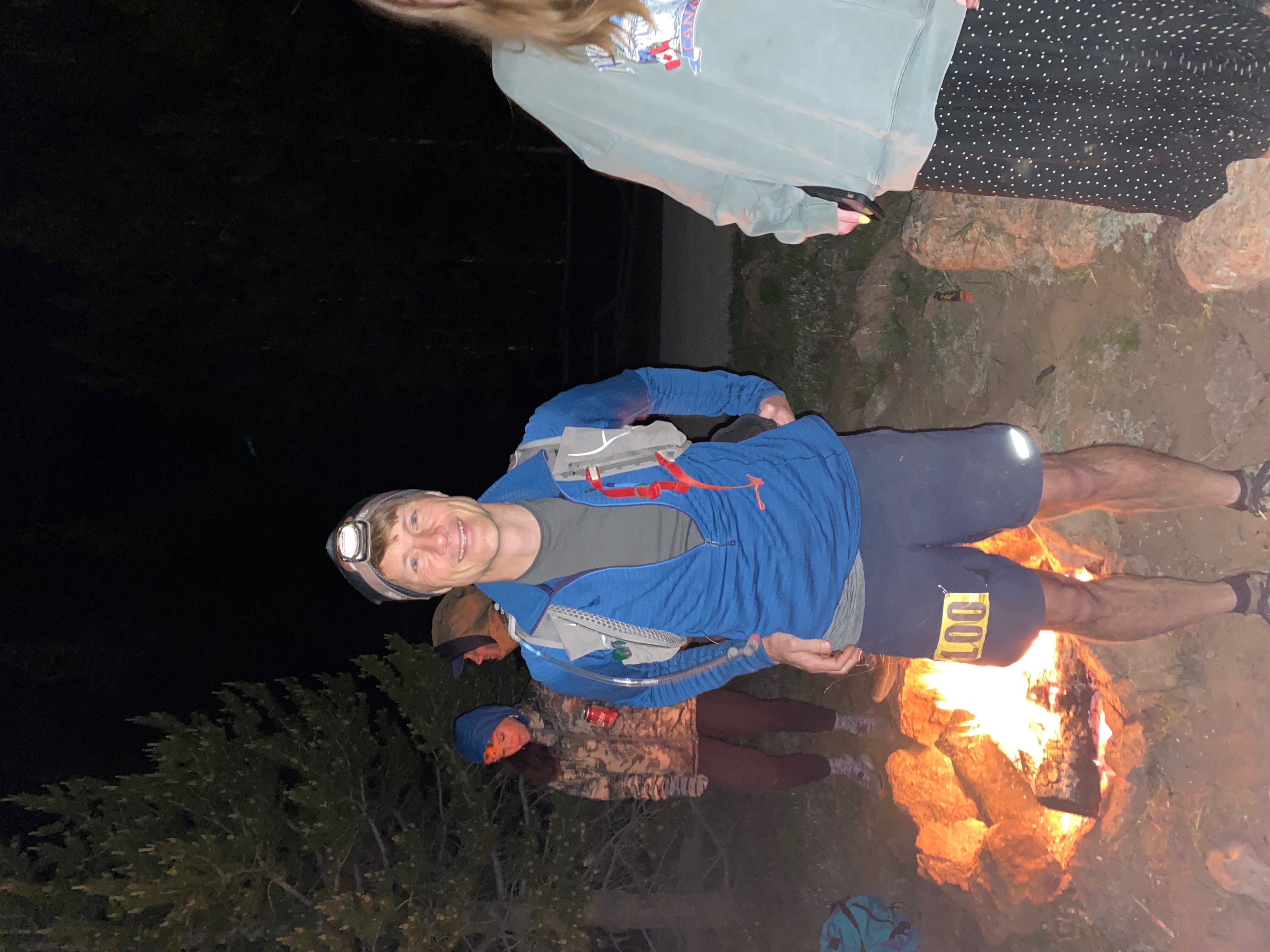
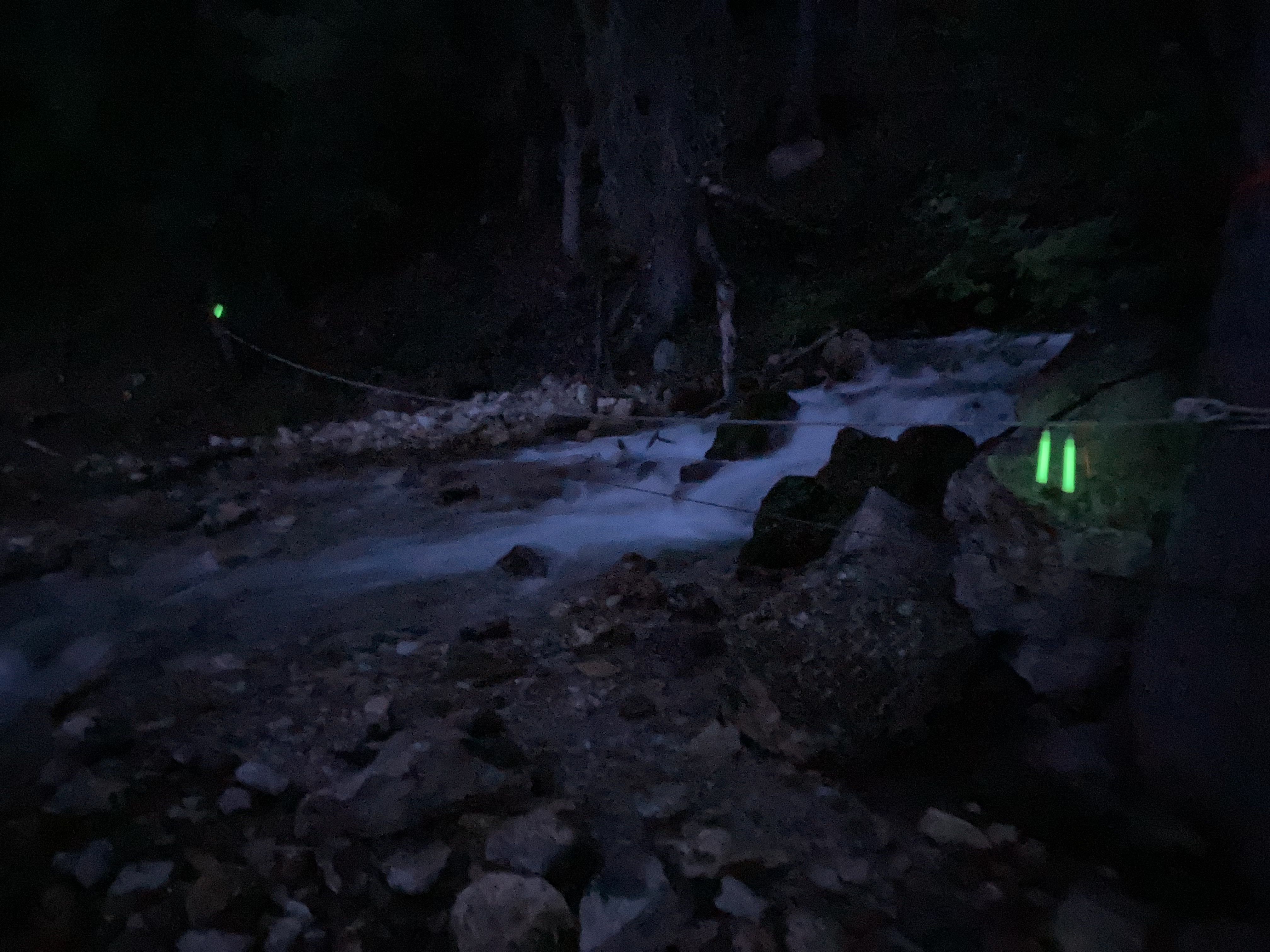
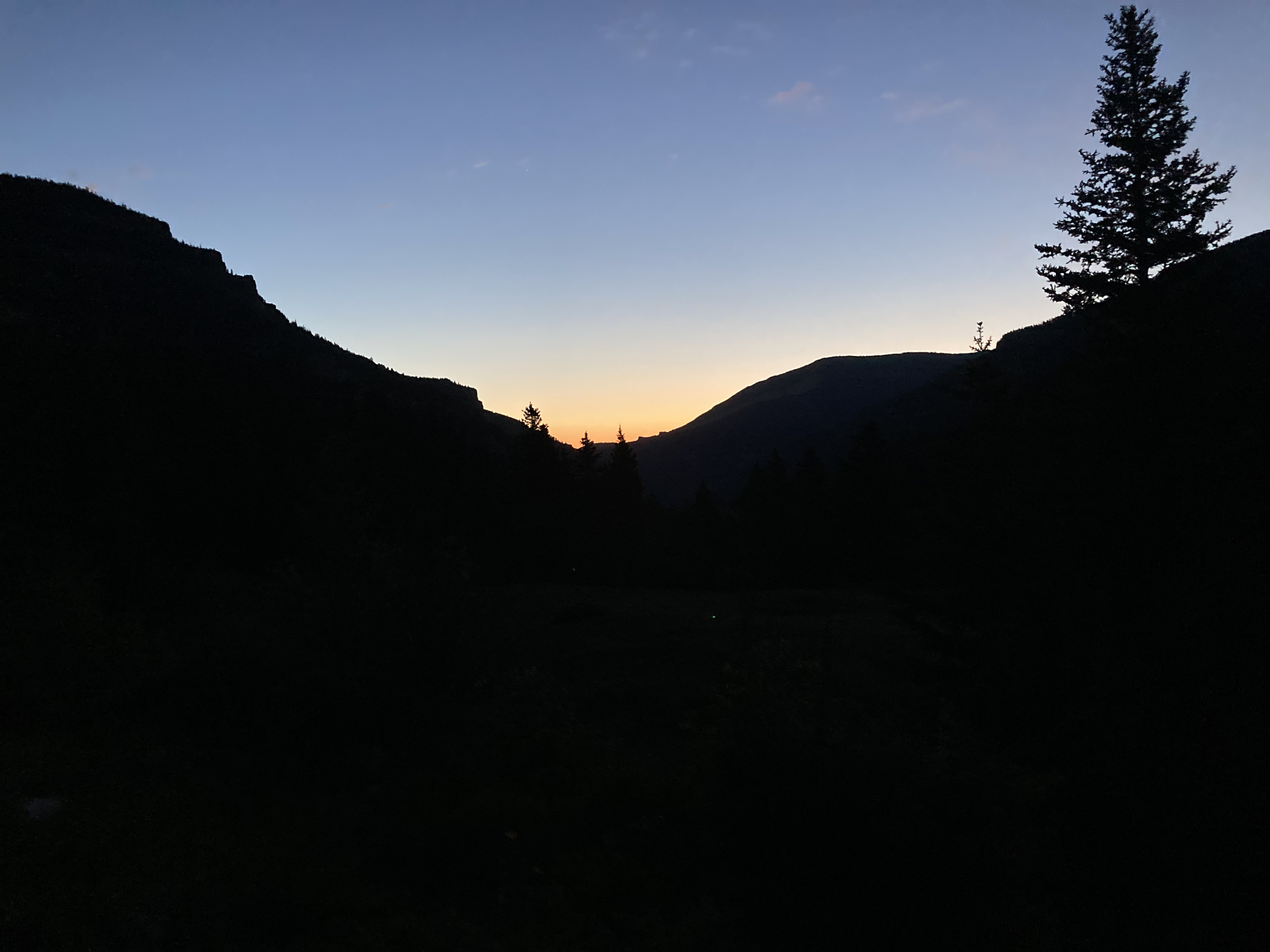
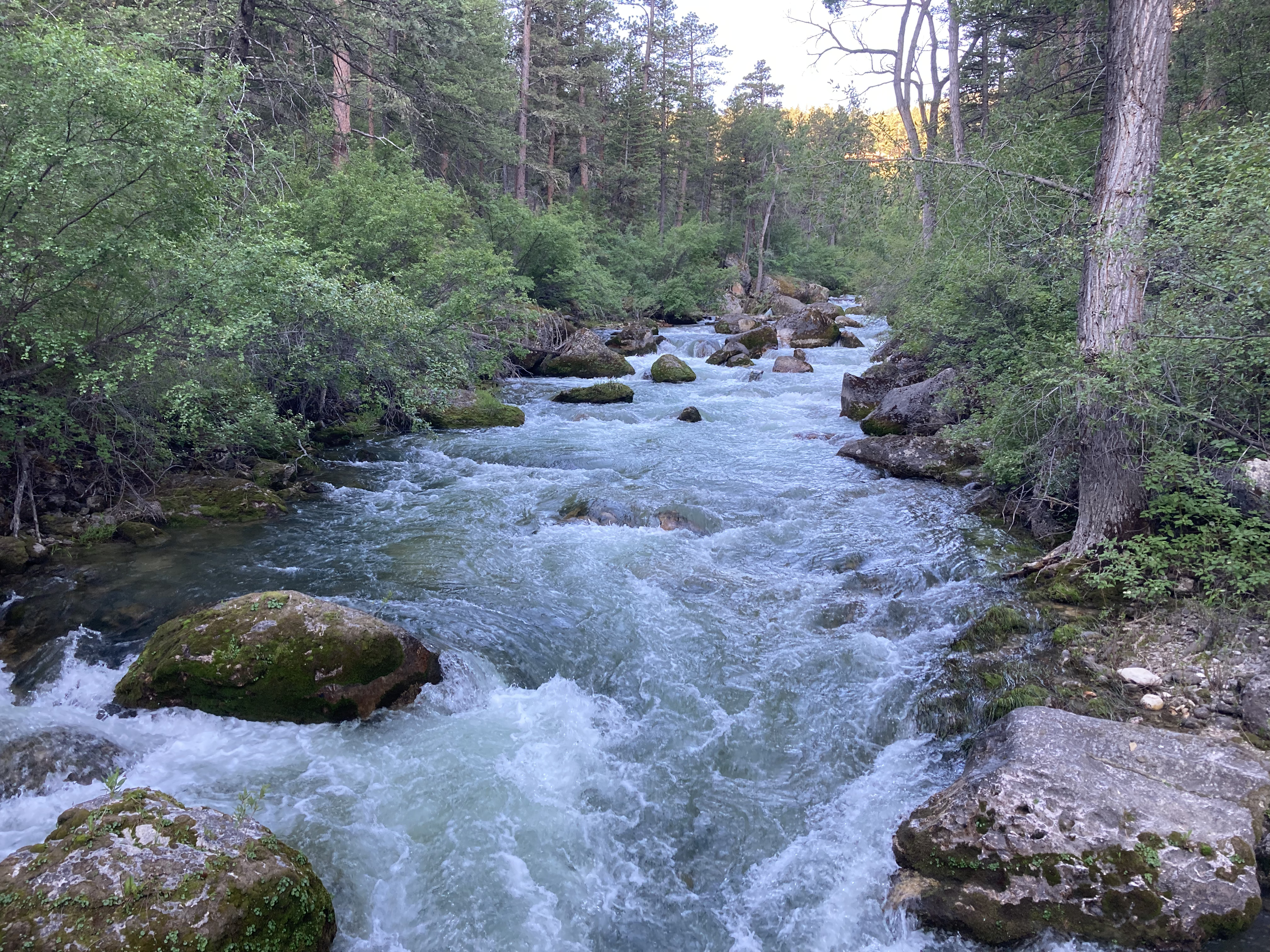
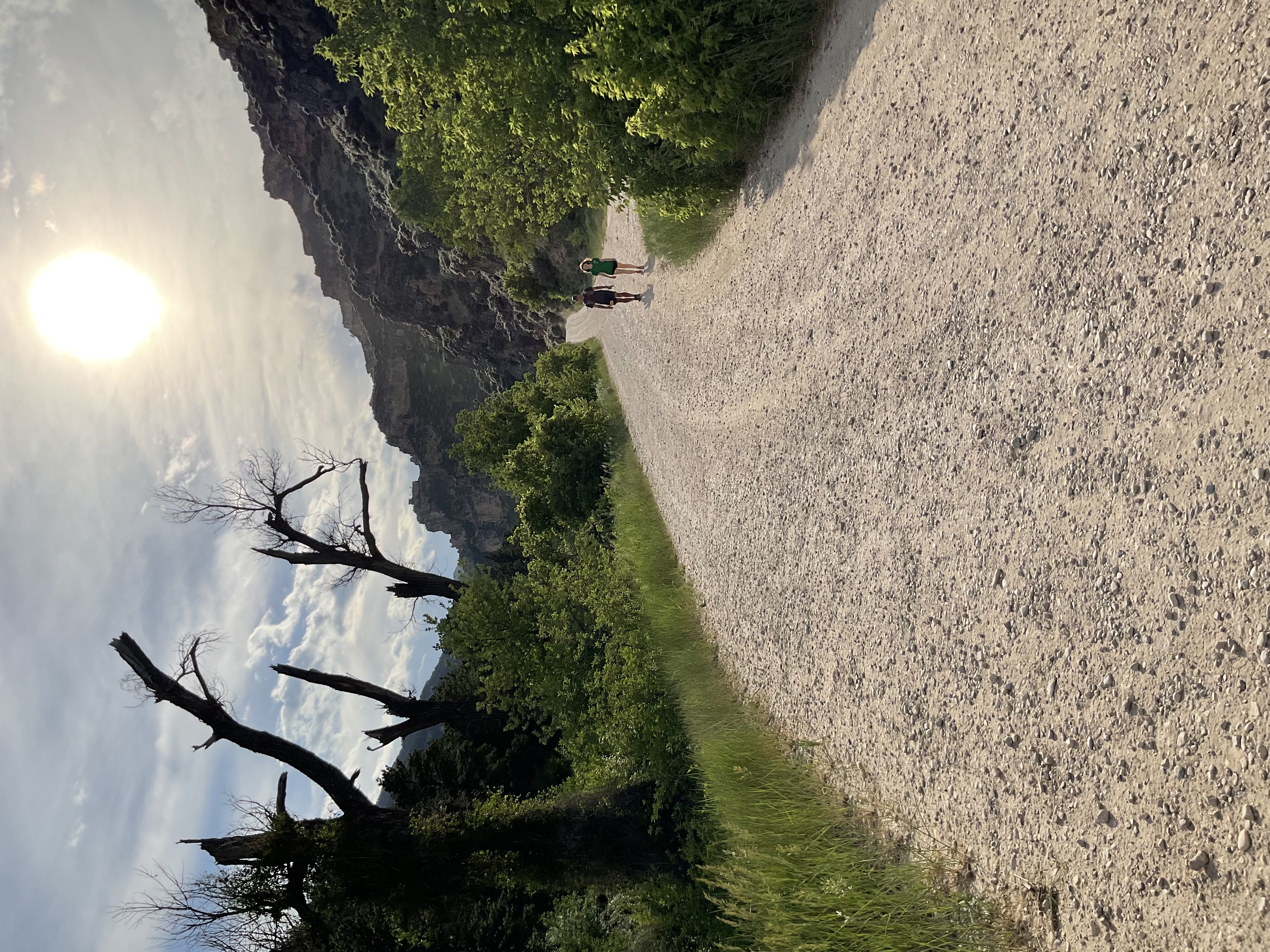

Thanks for sharing your story, your courage and your vulnerability. You gave me a glimpse of the edge you experience.
You also made me wonder if it’s hard to recognize other people’s edges when your own is an ultra-edge. Is that part of the loneliness?
As always your thoughtful reflection has just begun. I look forward to hearing more.
An amazing story well-told. You are correct in saying it is an experience impossible to understand unless you’ve done it. Words can never fully live up to the actual doing.
Mike – you are a fabulous writer and an amazing soul. Thanks for sharing this story with those of us who are too afraid of their own mortality to even attempt the journey. This is a story of a hero who I admire tremendously.
Bryan – so good to hear from you! Thanks for the kind words and I’m glad you enjoyed my journey and reflections.
Mike, Your mother shared your story and I am so glad she did. Your style of writing made me feel like I was with you on the trail. As I lifelong runner, who can only manage beach jogs now when in Florida with your parents, I can “almost” appreciate the mental anguish of a 100 mile race. A few times I have run a 20 miler that takes you primarily on country roads between Madison and Stoughton, WI; so the idea of a race 5 times that length in the altitude provided by the Big Horns will have to remain unfathomable to me. As it works out, the Big Horns are my favorite mountain range and Sally and I were just recently camping at a National Forest Campground a couple of miles off of Highway 14. While in the past I would run on forest roads for a few miles at that altitude, now I just enjoy the beauty of those mountains; and yes, even the cold, clear fast moving creeks on the Big Horns.
Dan, thanks so much for your note! We, too, fell in love the mountains there in WY.
this is wonderful. the type of writing mom would give a 10/10 in homeschool.